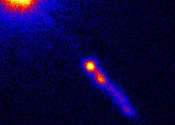The orbital flatness of planetary systems
The planets of the solar system all orbit the Sun more-or-less in a plane. Compared to the Earth's orbit, which defines the plane at zero degrees, the orbit with the largest angle is Mercury's whose inclination is 7 degrees ...









